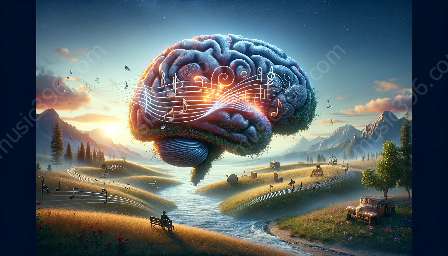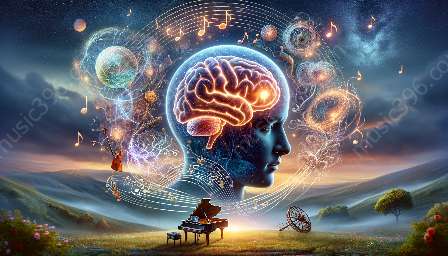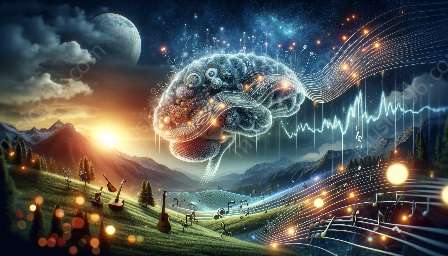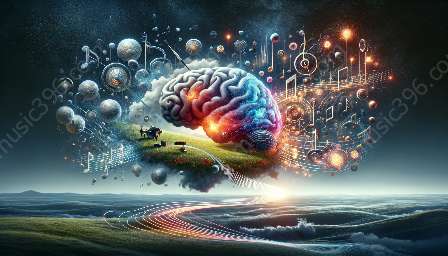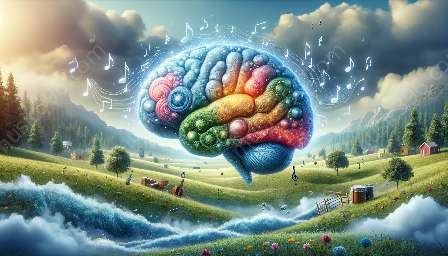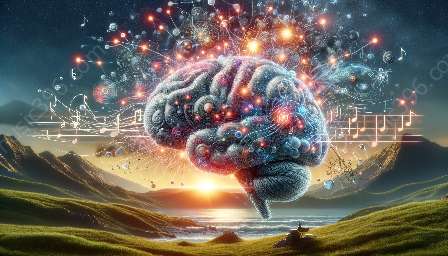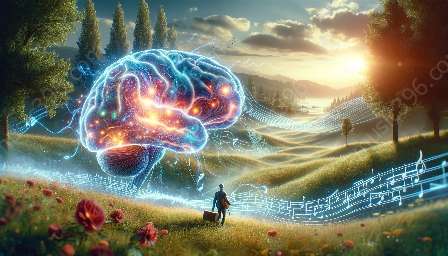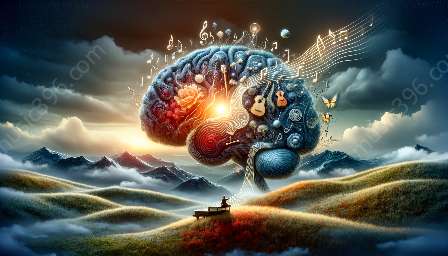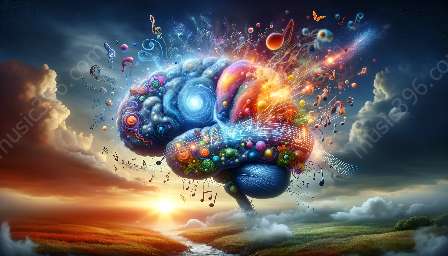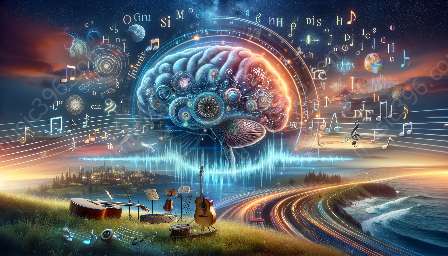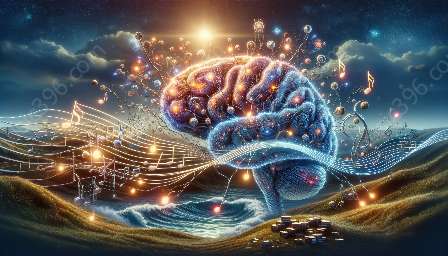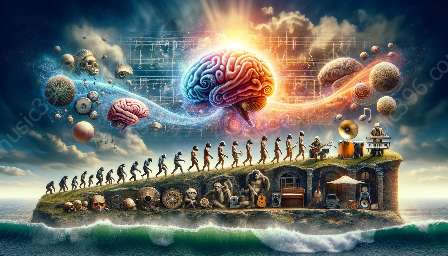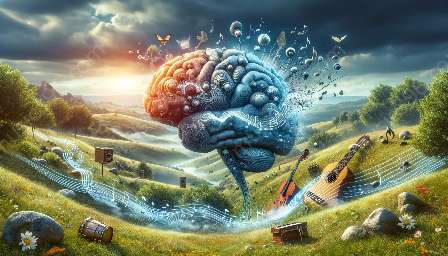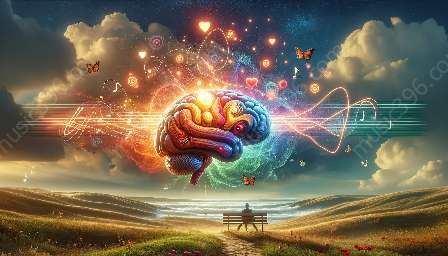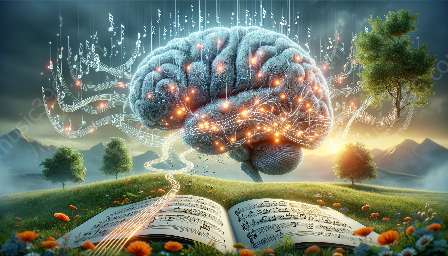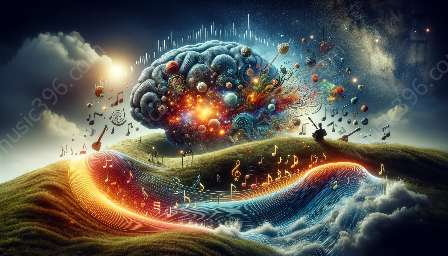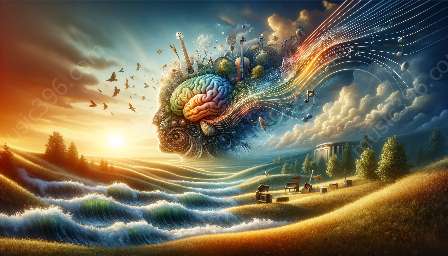Music, a universal language, has captivated humans for centuries, but what goes on in our brains when we listen to and interpret music? The field of neuroscience has made significant progress in unraveling the neural mechanisms responsible for musical perception. This topic cluster delves into the intricate neural circuitry involved in music processing and explores the profound connection between music and the brain.
Musical Perception and its Neural Circuitry
When we hear a piece of music, a complex interplay of neural pathways and brain regions comes into action to decipher and appreciate the auditory input. The auditory cortex, located in the temporal lobe, plays a pivotal role in processing musical sounds. It is responsible for breaking down the components of the music, such as pitch, rhythm, and timbre. Additionally, the frontal cortex, involved in higher-order cognitive functions, contributes to the emotional and cognitive aspects of musical perception, such as interpreting the mood or meaning behind the music.
Furthermore, the limbic system, particularly the amygdala and the hippocampus, is engaged in processing the emotional and memory-related aspects of music. This involvement explains why certain songs can evoke strong emotions or trigger vivid memories. The intricate neural circuitry for musical perception extends beyond these regions, involving intricate connections and feedback loops between various brain areas.
Neuroplasticity and Musical Training
Studies have revealed that individuals with musical training exhibit structural and functional changes in their brains, highlighting the remarkable neuroplasticity of the brain in response to musical stimuli. For example, musicians often display enlarged areas in the motor and auditory cortices, reflecting their exceptional motor skills and heightened auditory processing. Such findings underscore the pivotal role of experience-dependent neuroplasticity in shaping the neural mechanisms underlying musical perception.
Moreover, musical training has been associated with improved cognitive functions, demonstrating the far-reaching impact of music on the brain. This suggests that the neural mechanisms responsible for musical perception are highly adaptable and malleable, capable of being shaped and refined through exposure and practice.
The Role of Emotion and Reward Circuitry
Emotion is central to musical perception, and the brain's reward circuitry, particularly the mesolimbic dopamine system, plays a crucial role in mediating the emotional and pleasurable responses to music. When we experience a 'chill' or a surge of euphoria while listening to music, it is attributed to the release of dopamine in the brain's reward pathway. This intricate interplay between music, emotion, and the brain's reward system sheds light on the profound impact of music on our emotional well-being and its potential therapeutic applications.
Music and the Brain
Delving into the connection between music and the brain unveils a multitude of fascinating insights. The ability of music to synchronize neural activity across different brain regions has been a subject of extensive research. For instance, studies have demonstrated that listening to music can lead to synchronized activity between the auditory, motor, and limbic regions, creating a harmonious interplay that mirrors the rhythmic and emotional elements of the music.
Additionally, the cross-modal processing of music, where auditory input interacts with visual, motor, and emotional systems in the brain, further enriches our understanding of the multifaceted relationship between music and the brain. The intricate connections and crosstalk between these diverse brain regions underscore the integrative nature of musical perception, revealing how music engages and modulates various cognitive and emotional processes in the brain.
The Therapeutic Potential of Music
Understanding the neural mechanisms responsible for musical perception has paved the way for utilizing music as a therapeutic tool in various clinical settings. Music therapy, with its ability to stimulate emotional responses, enhance social interaction, and alleviate distress, has been integrated into treatments for a wide range of neurological and psychiatric conditions. For instance, research has shown that music can ameliorate symptoms in individuals with neurodegenerative disorders such as Alzheimer's disease and Parkinson's disease, highlighting its potential to harness the brain's neuroplasticity and promote cognitive and emotional well-being.
Furthermore, exploring the impact of music on the brain has led to the emergence of novel therapeutic interventions, such as personalized music-based treatments tailored to individual neurological profiles. By leveraging the profound effects of music on neural circuitry, clinicians are increasingly utilizing music as a non-pharmacological approach to enhance cognitive function, emotional regulation, and overall neurological health.
Conclusion
The neural mechanisms responsible for musical perception are deeply intricate and encompass a multifaceted interplay among various brain regions and neural pathways. From the processing of auditory inputs in the temporal and frontal cortices to the modulation of emotional and reward responses in the limbic and mesolimbic systems, music engages a rich tapestry of neural mechanisms that illuminate its profound impact on the brain. Understanding these neural underpinnings not only unveils the remarkable adaptability and plasticity of the brain in response to musical experiences but also opens doors to harnessing music as a therapeutic intervention for various neurological and psychiatric conditions.



